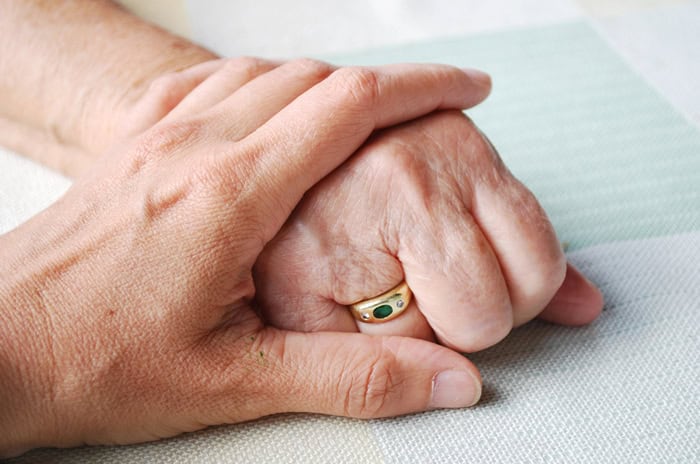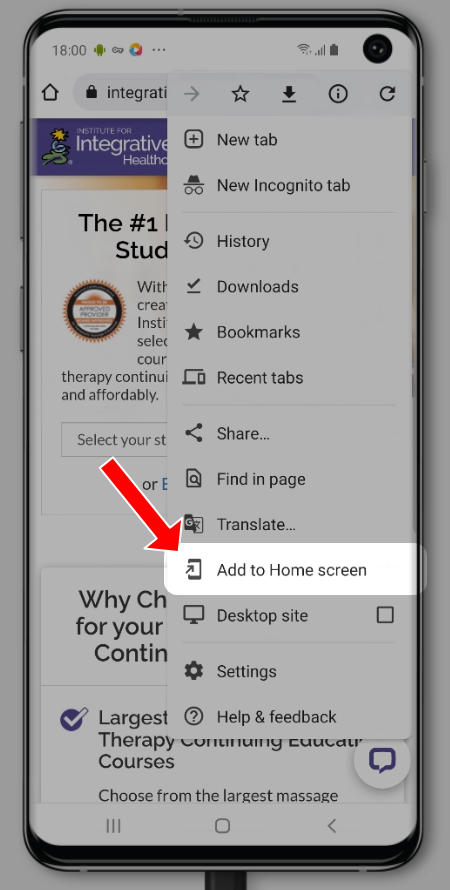

The term Grief Massage is commonly used in the massage and bodywork field to designate massage therapy and related bodywork to aid clients experiencing grief.
It is first wise to define grief as well as related terms. Grief is a natural reaction to loss. Everyone experiences the sensations of grief uniquely. Sorrow, a sense of deep regret, may accompany grief.
Bereavement is the state of the mind while grieving. This term may broadly encompass the entire experience of the grieving process. Mourning is an external expression of our grief, a social response to what one is feeling inside. (1)
Grief Differs From Mourning
Grief differs from mourning in a key distinction. Grief involves the internal sensations experienced with loss, whereas mourning entails the external expression of these sensations.
Understanding the five stages of grief can help you as one who holds space for the patient and family members. There is no expected timetable for moving through these stages.
Often, we associate grief with death of a person. Grief can also be experienced with a loss of a significant phase of life. Here are some examples of how this may appear.
Someone may feel grief after:
- Divorce
- Losing a job
- Witnessing their children age and leave the home
- Departing with significant personal items
- Losing physical or mental capabilities
5 Stages of Grief
Elizabeth Kubler-Ross, world renowned American psychiatrist, conceptualized grief in five stages. These steps can be considered for both the individual actively dying and family members. Understanding these stages aids practitioners in understanding the mental faculties of involved parties. This allows for better treatment planning, communication, and healing to commence.
A commonly used mnemonic in collegiate courses to recall these stages is DABDA. (2)
- Denial
- Anger
- Bargaining
- Depression
- Acceptance

Denial
Denying or ignoring death (prior, during or after transition). Often thought of as an ego defense mechanism. The person may feel powerless, experiencing a sympathetic freeze or flee response.
Anger
An emotion that arises as a call to action when facing a difficult situation. The person may try to “solve” issues pertaining to the condition causing transition. There may also be a “targeting” of actions (towards themselves, family, doctors, God).
Bargaining
When actions stemming from anger find no resolution, this next phase onsets. The person may draw inwardly in attitude and demeanor. Some people become docile while others become actively engaged in treatments, following doctor’s orders to the utmost.
Depression
When realities of the circumstances begin setting in mentally, this stage next onsets. The patient’s condition may worsen, the end-of-life stages begin accelerating and/or a sense of powerlessness ensues.
Acceptance
This fifth stage encompasses the mind being drawn to a neutral state. Much internalization of emotions, feelings and thoughts occur. One reinterprets meanings and significances of life. Present life circumstances are better integrated into one’s daily routine.
Alleviating the Effects of Grief with Massage
A massage session geared towards aiding to alleviate the effects of grief within a client will entail several key components. These will be:
- the intake process
- the environment created
- the session itself
- and the concluding communication
Each aspect is significant in facilitating a safe, effective session for a client experiencing grief.
The Intake Process
The intake process with a client experiencing grief needs to include active listening. Clients feeling the effects of grief may answer questions slower and with more contemplative tones. Recalling past pain and trauma around life events can illicit emotions as they share their story. Provide ample time to actively hear their story and understand their feelings.
Be careful to avoid trying to placate their feelings and/or minimize their experience. For example, saying “well now that they have passed away you can move on” will not be as helpful to the client experiencing grief as the therapist may intend. This kind of statement minimizes their experience and feelings. People need to “feel it to heal it” per say. Simply listening to their story and responding with a validating statement such as “That sounds difficult for you to experience” will be received better by this client.
The Environment Created
The environment created with a client experiencing grief needs to be nurturing and warm. Tour your treatment space to look for items and décor that can be potentially triggering. Keep conversation to a minimum and avoid discussing topics pertaining to the events creating grief within client unless prompted first by the client; even at that point listen more than you speak.
Most importantly, ask the client what they prefer regarding ambiance within the treatment space. These can include lighting, sounds, scents and aromas, textures of linens, bolstering preferences, temperature of room and table, and general décor items such as trinkets and wall hangings.
The Massage Session
The massage session performed upon a client experiencing grief needs to convey compassion. Their nervous system is amplified during times of grief, initiating the sympathetic mode more often in their daily lives.
Ways to calm the sympathetic response, thereby initiating the parasympathetic response include slowing the speed of strokes, easing the cadence of strokes, taking strokes longer through a body region and plane, taking time to pause during session to simply hold an area, and applying compression strokes.
Incorporating breathwork, meditation and visualization may be helpful as well. Guiding a client through an easy-to-follow breathwork, through a peaceful meditation or serene visualization while performing bodywork can calm the nervous system. This may help a client to relax more upon the table to allow the massage therapist easier access to addressing muscles and/or enable a client to share more freely upon the table.
Managing Somato-Emotional Responses
Be aware of the potential for somato-emotional responses during the session. The client may have had feelings, thoughts and/or emotions arise during session. Be prepared to manage this situation should it arise.
Recommendations are to:
- pause session to acknowledge the response is occurring
- validate this response is OK to occur within the session
- continue as directed by the client as they need the onus of control during this response
The Concluding Communication
The concluding communication after session completion for a client experiencing grief needs to allow for ample time for a client to express freely. The client may have had feelings, thoughts and/or emotions that arose which were not yet expressed. After session, a client may wish to express these aloud with the therapist. Ensure active listening to hear and understand how your client is feeling after session.
Encourage self-care coping tips to help them manage these items at home.
Examples of these coping tips can include:
- relaxation techniques
- movement to release physical angst
- breathwork
- meditation
- journaling feelings
Also suggest professional counseling to help with further healing into their grief.
Massage therapists can be a wonderful support for clients experiencing grief. Consider it an honor that such a client would entrust you within their healing journey during this difficult time.











